Conservation and Restoration Work for Special Historic Site and Special Place of Scenic Beauty, the Imperial Villa Garden Site of the Ancient Nara Capital
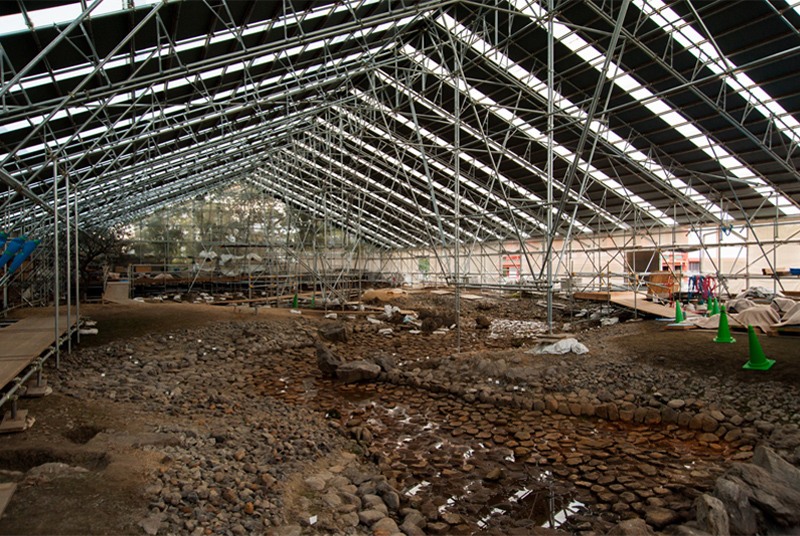
The Imperial Villa Garden Site of the Ancient Nara Capital (also known simply as the Imperial Villa Garden) was discovered in 1975 during an excavation made when the Nara Post Office building was moved. It was thereafter reburied, but then excavated again in 1985 to perform care and maintenance work and to reinforce and restore its scenic stones (keiseki). After this work was completed, exhibitions with the garden exposed to outdoor elements began.
Nevertheless, with the passage of over thirty years, deterioration was once again observed.
[Technical Reports and Research Outcomes in the Conservation and Repair Project]
Restoration of Scenic Stones at the Imperial Villa Garden Site of Ancient Nara Capital
About the Imperial Villa Garden Site of the Ancient Nara Capital
This garden was built around 750 AD and is thought to have existed until around 800 AD, the beginning of Japan’s Heian period (794-1185).
The Imperial Villa Garden is an invaluable historic ruin discovered in the same form as it existed during the Nara period, approximately 1,200 years ago. It is an important time capsule conveying in unaltered form how people thought about and appreciated gardens. Thus, not only are the scenic stones themselves very important, but so too are the position and angle that they are set in. As a result, the entire garden is subject to preservation, including elements such as these.
Repair
Thirty years later, this restoration work aims to restore the garden's original beauty achieved when it was initially restored. Restoration work is broadly divided into three stages.
- The positions of scenic stones that have become damaged or fragile are recorded. These scenic stones are then removed.
- Removed scenic stones are soaked in a reinforcing chemical agent. Stones that have come apart are bonded together with an epoxy resin.
- Reinforced scenic stones are replaced in their original position with millimeter-level accuracy.
Documentation and Removal
Once it has been decided that part of the whole ruin will be restored, efforts begin first by conducting a survey and taking records at the location site.
It is important to make a complete record of invaluable information such as how people set these stones over 1,200 years ago.
We place markers on important points of the stones and use a triangulation point as a reference to establish their position with.
When replacing the stones, these photographs and markers are important reference information to have.
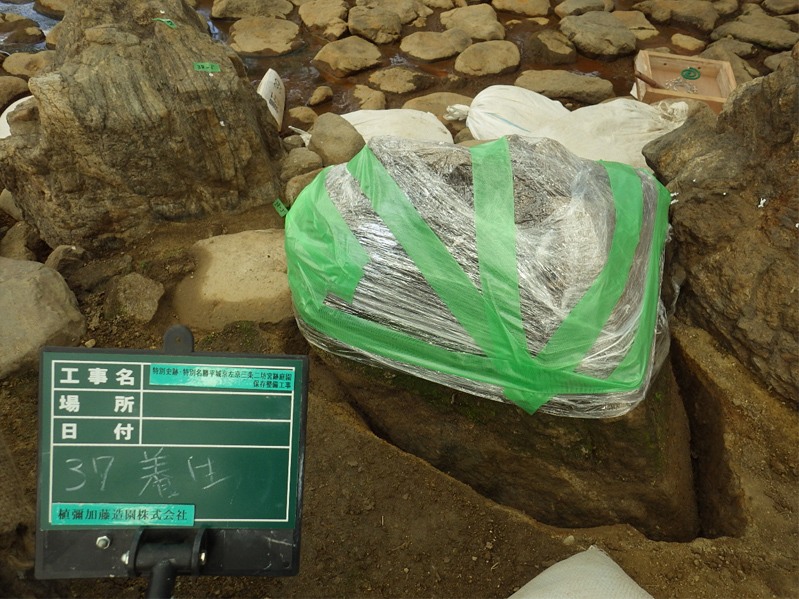
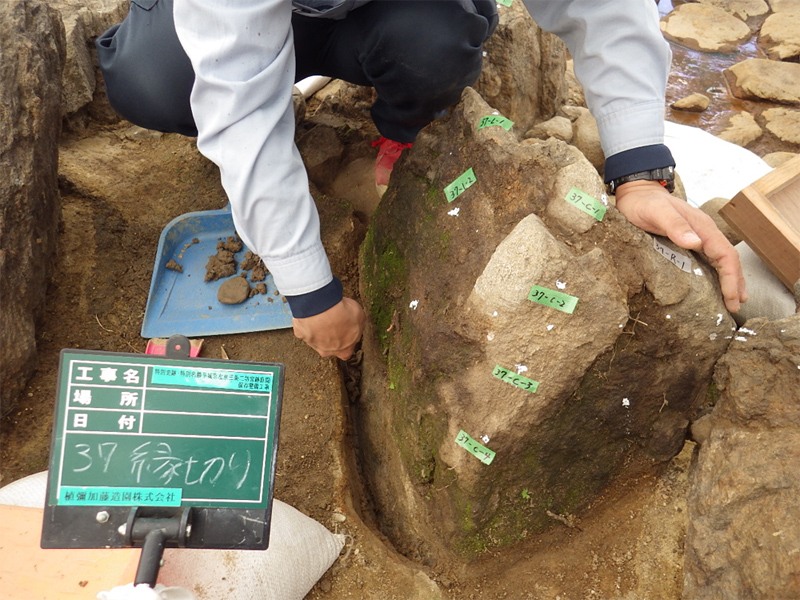
To avoid damaging the layer of soil around the stones as much as possible, stone removal is performed with caution and to the minimum degree necessary. Here, we rely upon the informed touch of the gardener, who handles scenic stones in his or her daily gardening. Work proceeds by anticipating how deep a stone is buried in the earth and what direction it is buried in.
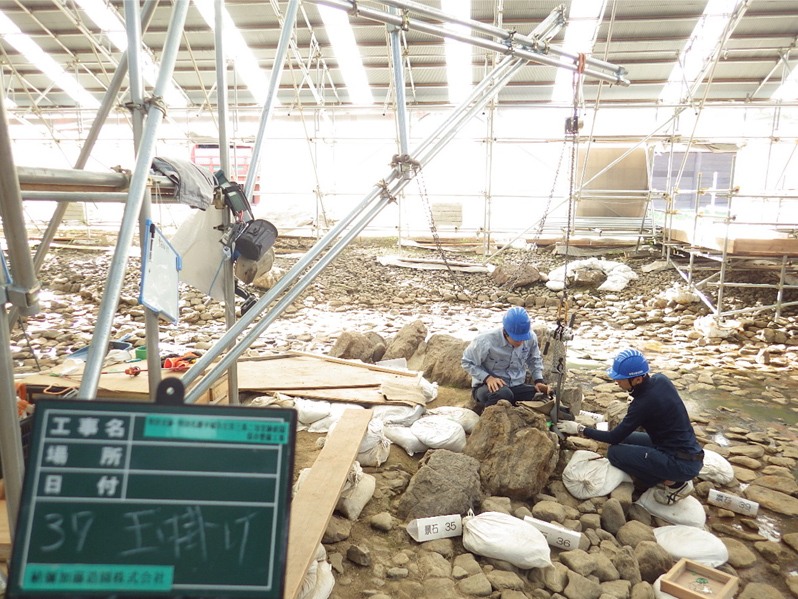
Next, the wrapped scenic stone is hoisted upward. This is an extremely advanced technique of traditional Japanese gardening still employed by gardeners today in which a belt-shaped rope (sling) is used to change the direction that the scenic stone faces with complete control. It is a technique that requires great proficiency to hoist a heavy rock with just one rope so that it faces the angle that it needs to be set in.
Here too, everything is recorded on the spot so that restoration may be performed later.
Depending upon the damage condition of the stone, the removal method may also be amended.
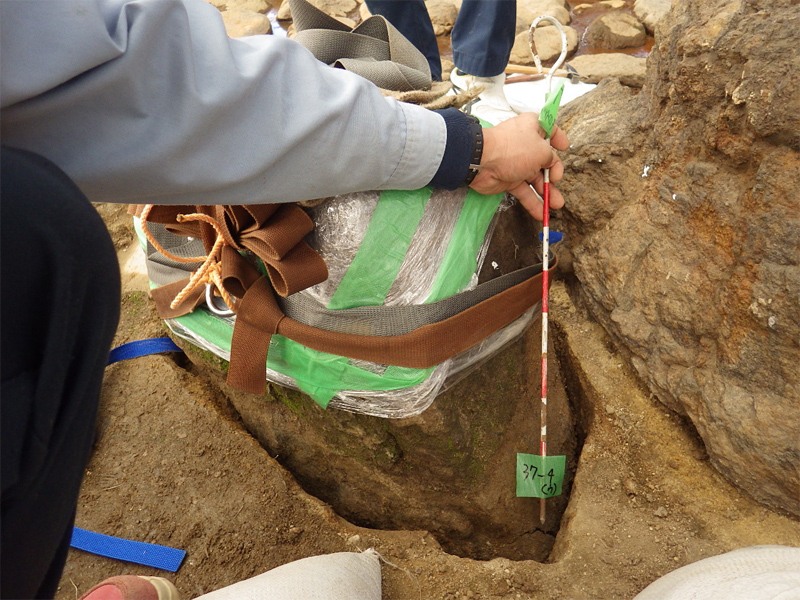
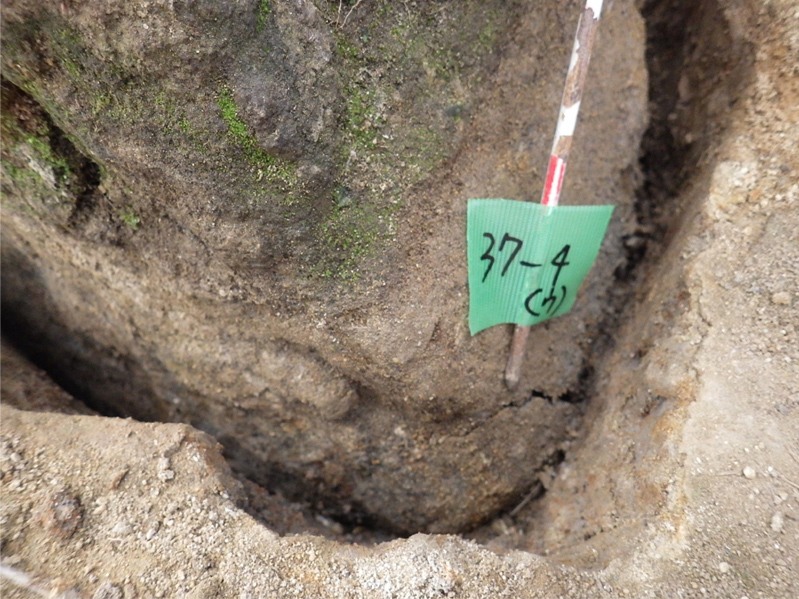
The stone is quickly transferred onto a seat that has been prepared in advance, and conservation treatment is applied to the entire scenic stone so that important information is not lost.
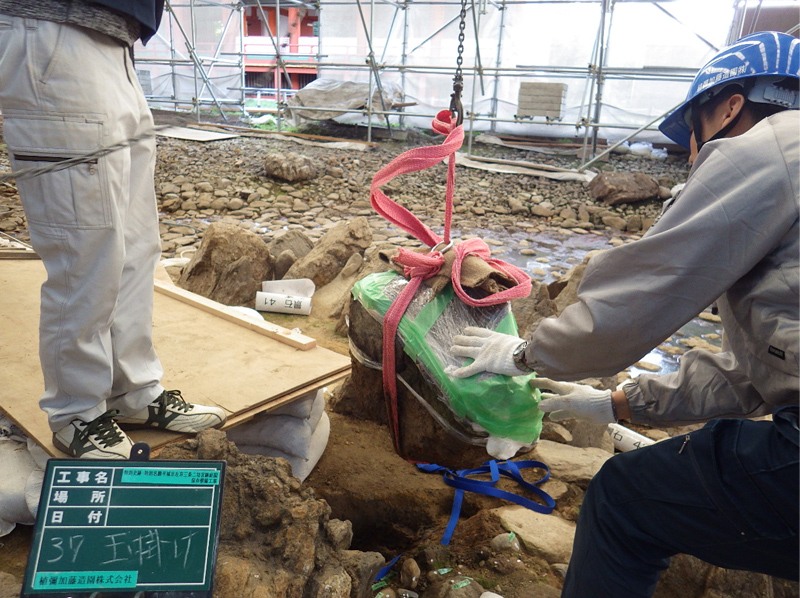
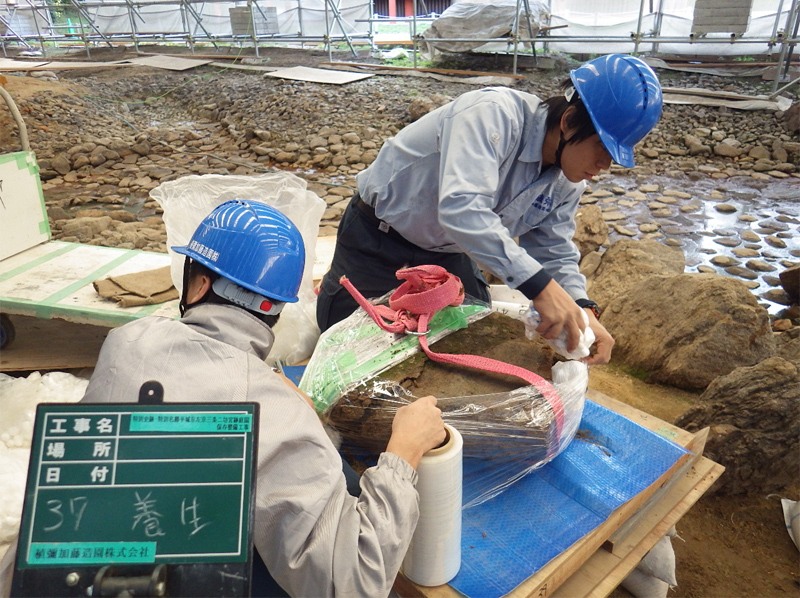
The imprint left in the ground by the removed stone is also an important document.
Everything is recorded.
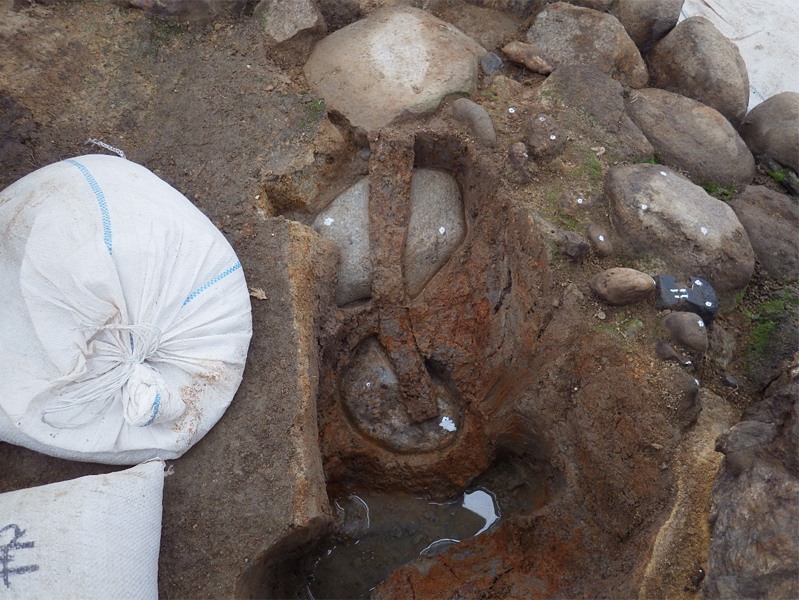
Every movement is taken slowly and carefully while carrying the stone.
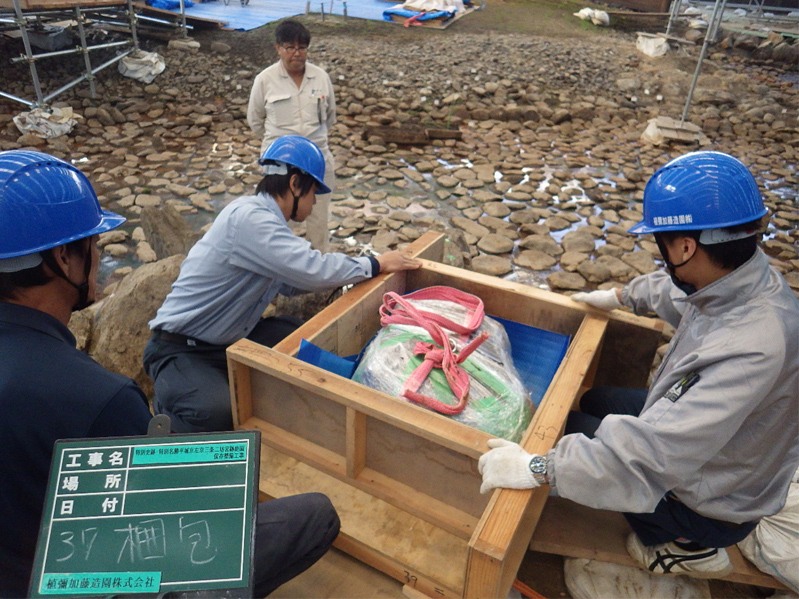
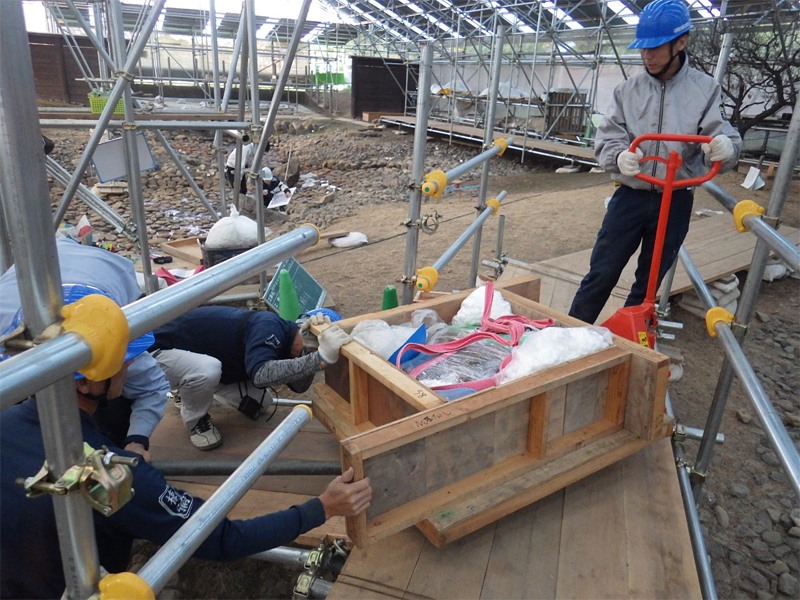
Restoration of Scenic Stones
Stone fragments are also washed.
Scenic stones can sometimes be broken into as many as 600 pieces. Each one of these fragments is numbered and treated.
The fragment is then dried for a minimum of a week so that the chemical treatment can permeate the stone properly.
After drying is finished, this chemical treatment is permeated through the stone to supplement and strengthen the glassy substance inside the rock known as silicon.
Small fragments are put in cups and impregnated.
Large items are placed in a net and treated before being impregnated. Both small and large items are impregnated for three hours. After impregnation, excess chemical treatment is wiped off to prevent discoloring. The stone is then stored for a week away from direct sunlight and rainwater.
Once impregnation is completed, work begins to bond the fragments together.
An inconspicuously colored mortar or epoxy resin adhesive is used.
The color of the mortar material is changed to suit the stone.
This is what the stone looks like after bonding is finished.
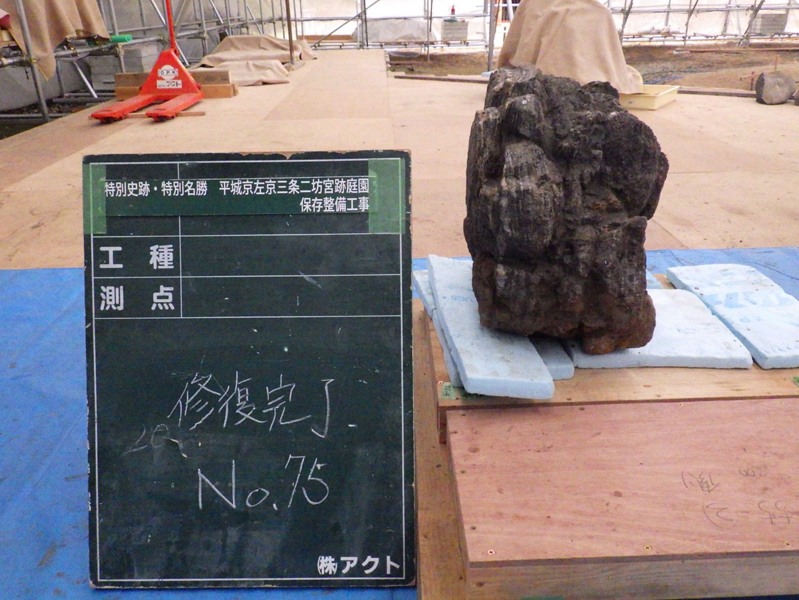
Resetting
The restored scenic stones are reinstalled in their original positions.
The stones are transported safely to the reinstallation site.
The information taken at the time of the stone’s removal is rechecked, and a method of reinstallation is discussed.
A coin minted in the year that restoration work was performed is inserted so that the year of the restoration work can be known even if all other documentation is lost.
The stone is hoisted on the belt-shaped rope (sling) and adjustments are performed so that the stone can be inserted at the angle desired by lowering it directly perpendicular to the ground.
Clay is supplemented as necessary.
Reinstallation of the stone is completed.
Since 2014, this restoration work has been performed on seventy areas of the Imperial Garden Villa.
After restoration work is completed, the garden is scheduled to be reopened to the public so that it can be appreciated in its original form and used as a highly valuable research source.





















